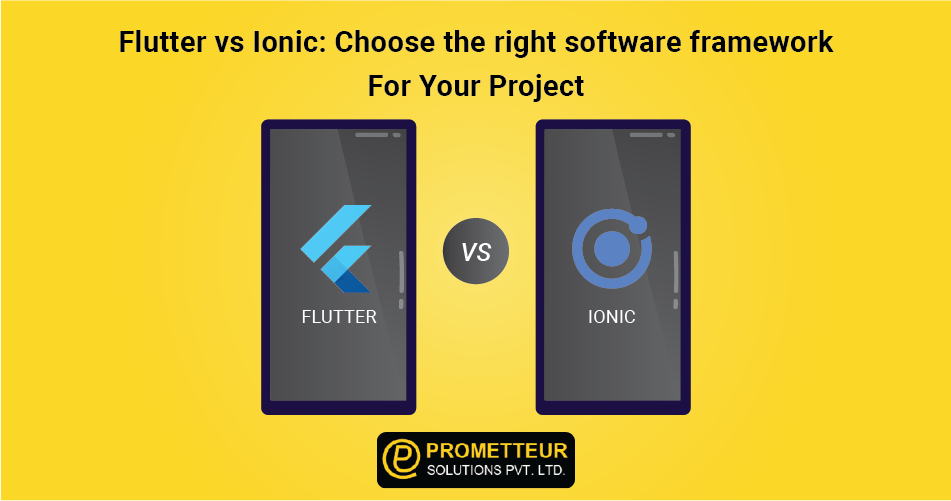Comparing Flutter Vs Ionic: Which Framework Is Better For Your Business?
Summary
Choosing the right software framework can be confusing, time-consuming, and costly. The market is filled with options and it is difficult to know which features you must have in advance and what frameworks are compatible. The right framework is essential for building a successful website or app. Inaccurate or off-budget decisions will result in a poor user experience and lower conversion rates. Web app frameworks are not one size fits all solutions. From complex e-commerce sites to simple blogs, there is a framework that works best for your needs. At the end of the day, it is all about finding a balance between low cost and high quality of development that meets your deadline, budget, and excellent user experience.
Feature-wise, both frameworks can perform various tasks. Both the frameworks offer a single-page app experience, both are single-page applications (SPA) which is extremely useful when your users are interacting with your website via mobile browser. There are some similarities in features but there are also some differences in functionalities. This article explores the similarities and differences between Flutter and Ionic frameworks in an attempt to help you know which is best for your business.
What is Flutter?
Before diving deep into Flutter’s core features and comparing them with Ionic Framework, it is a good idea to understand some of its key highlights. Flutter is a cross-platform mobile and desktop application development framework, developed by Google, to work both for Android and iOS. While it targets Android devices, it offers features and UI power to iOS developers as well. It is built on Google’s Dart language, which makes it very easy to understand and learn. Flutter is a framework for building user interfaces in the Flutter Way.
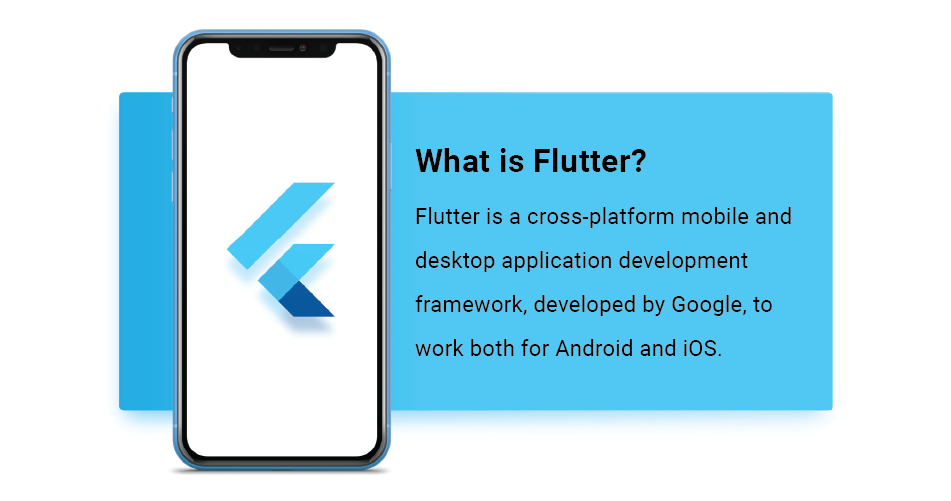
Flutter UI is built to be fast and to scale to multiple devices. Flutter apps are light in weight and capable of being highly optimized for both iOS and Android. Its performance is also just incredible and that is due to the Flutter framework.
What is Ionic?
Ionic is an open-source user interface toolkit that allows you to develop hybrid cross-platform mobile apps. It employs Webview for mobile rather than native device elements. The framework makes use of well-known JavaScript codebases such as vanilla JavaScript, Angular, React, and Vue. Ionic also has a number of components presets that enable native functionality. The framework is well-known for its fast performance with little DOM modification.
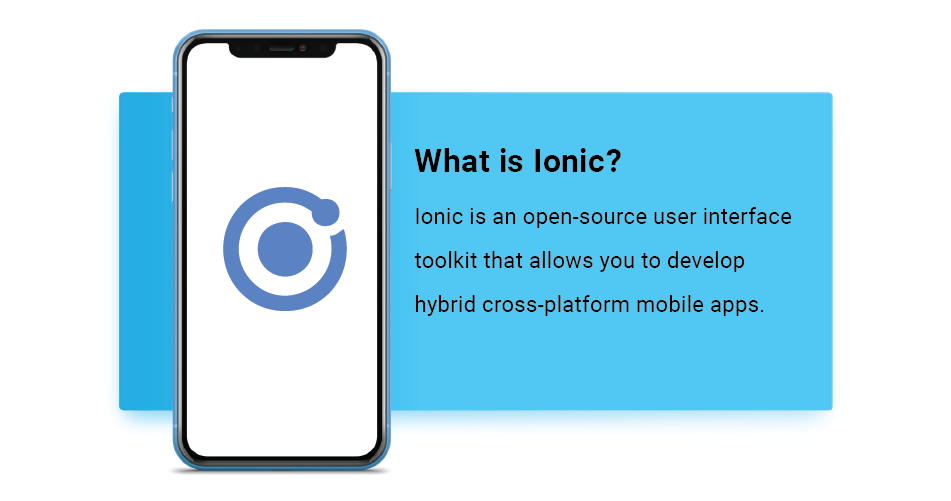
Ionic is a UI framework with an emphasis on mobile and web UI. Ionic provides plenty of functionality for building hybrid applications and modern, user-friendly web apps. Ionic uses AngularJS, a full-stack JavaScript framework, for building hybrid apps and it supports Angular CLI, which is very handy for getting started quickly.
Ionic framework: Ionic has good support for drag and drops and transitions which lets you integrate animations into your application as well. Ionic can handle SMS, push notifications, and events from server and server-side frameworks.
Ionic has a small set of built-in actions such as save, upload, store, and update. Ionic supports Apple’s mobile environment, thus making Ionic an iPhone-centric framework. Routes can be controlled by custom markup. Ionic’s official documentation suggests that any type of application can be built with the Ionic framework.
Flutter VS Ionic Architecture
Flutter
The architecture of Flutter is layered. The top-level root function, or platform-specific widgets, is at the top of the hierarchy of a basic application built on this framework. Aside from rendering, there are animation gestures that transmit API requests to the application’s foundation. The scaffold is another name for a C/C++ engine and a platform-specific embedder that runs it. If you want to isolate the display layer from the business logic, Flutter BLoC is a good option. This design makes complicated app development easy for both seasoned and junior Flutter developers.
Ionic
Ionic builds complex single-page, cross-platform apps targeted for mobile devices using the AngularJS MVC framework, a software design pattern that consists of a Model View Controller. This design allows several developers to work at the same time, reducing development time and increasing efficiency. Furthermore, because the design allows for the construction of different Views, the program is resistant to iterations.
Learning Curve
Ionic is a platform to build hybrid mobile apps. The hybrid approach is common among Android development frameworks. With Ionic, you use an Ionic Framework to build an application and then use Cordova to push your app to various mobile platforms. Flutter vs Ionic is a radical concept from the concept of the hybrid approach.
The Flutter project is actively developed, which is likely to bring a paradigm shift in app development. The project was developed by Google and is built on Dart, which is an interpreted programming language for compiling to native mobile environments. Ionic enables you to create applications with fluid HTML/CSS/JavaScript and is very flexible, but it requires you to learn and use Cordova.
Flutter VS Ionic UI Framework
Flutter is a UI framework for mobile and is built on Dart language. In order to create UIs, it has built-in support for events and the ability to manipulate UI elements and work with properties and arrays. Flutter vs Ionic is gaining a lot of traction, and it’s fast and lightweight and offers a good UI experience. Flutter vs Ionic framework is basically a software library that comes bundled with an Android and iOS mobile application, wherein the application developer can write in standard JavaScript and HTML5, and the application developer can leverage tools that work for either system. Both these frameworks are meant to simplify the development of native mobile apps.
On the other hand, Ionic is well known for its beautiful UI, it also delivers good performance. It’s light on the developer’s side and it uses Electron which provides a wonderful experience for the developer. On the other hand, Ionic is an Android and iOS mobile application framework for developing apps that run natively on the devices and on the web. Ionic was originally developed for the iPhone and has been ported to Android in version 2.
Ionic Vs Flutter Community
Ionic Community: How Big?
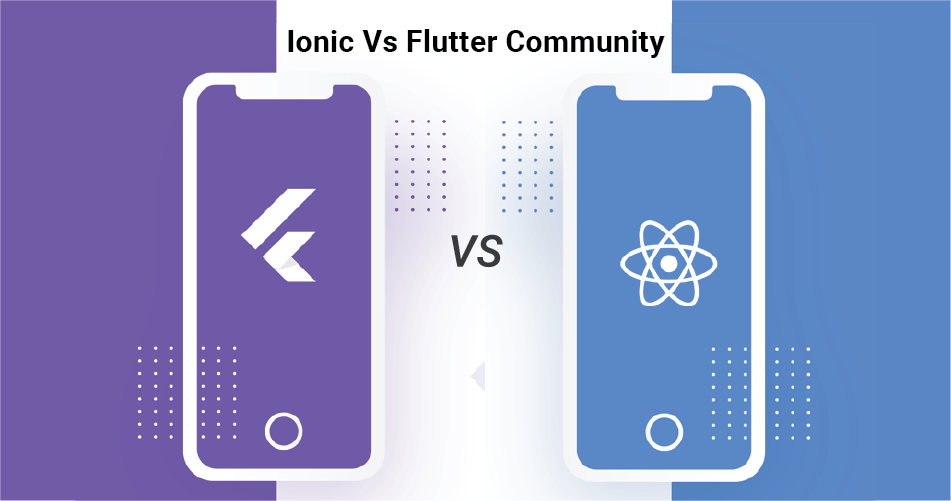
The Ionic developer community has grown to almost 5 million members since its inception in 2013 The Ionic framework has also been used to generate over a million apps by developers from over 190 countries worldwide. On GitHub, the ionic community has forked approximately 13.3K live projects. The following are some of the most popular platforms for connecting with the global Ionic community: Github, Stack Overflow, Reddit, and Gitter.
Flutter Community: How Big?
Since the year 2017 when Flutter was launched by Google, the framework has proven to have grown a bit more in popularity compared to Ionic. For Flutter, there are only 662+ professional contributors yet, the community has forked about 13.7k of Flutter’s active projects, where anybody may seek development support. There are a few popular sites for connecting with the Flutter community across the world. You can easily connect with the Flutter community on Discord, Reddit, Stack Overflow, Slack, Quora, and Flutterday.
On Standing Out
With the minimalistic code base and intuitive UI, Flutter has always stood out from the pack giving developers a plethora of choices. Let’s look at some of the highlights of Flutter vs Ionic.
1. Swift Package Manager
Flutter has the Swift Package Manager (SWP) whereas Ionic has been working with the Node Package Manager (NPM) to manage and add features to Flutter vs Ionic apps. One drawback of the Swift Package Manager is that there are limited packages available for it.
2. Flutter offers
Flutter offers customizable frameworks, themes, and icon sets and gives developers access to one single code editor. As compared to Ionic where developers have to utilize 2-3 different code editors to run their apps.
3. Flutter is considered lightweight
Flutter is a lightweight framework and it’s built on Android. Ionic is an open-source framework for hybrid mobile application development. Both are cross-platform and agile and give developers the best of both worlds — pre-built applications that work across any device.
Flutter stands out because it surpasses its arch-rivals in terms of performance. Because native components are available by default, there is no need for a bridge to interact between them. According to the performance test, the program consistently runs at 60 frames per second, and rendering each frame took no more than 16 milliseconds. Flutter makes use of the Skia graphics package, which allows the UI to be recreated every time the application view changes. This is how Flutter vs Ionic can run smoothly at 60 frames per second.
Ionic apps run at 60 frames per second on both mobile and desktop. The framework makes use of pre-existing plugins and takes a hybrid approach to development. The framework takes less than 1.8 seconds to interact with. As a non-native framework, Ionic offers hardware-accelerated transitions, touch-friendly gestures, and pre-rendering that makes it stand out from the other frameworks.
Other similarities/differences between Flutter vs Ionic
Ionic:
If you are familiar with Angular, then you should find it very familiar with Ionic because it provides similar functionality to Angular. Ionic is developed by Google and is available as a free and open-source framework forked from Angular.
- Ionic is a UI framework with an emphasis on mobile and web UI.
- Ionic provides plenty of functionality for building hybrid applications and modern, user-friendly web apps.
- Ionic uses AngularJS, a full-stack JavaScript framework, for building hybrid apps and it supports Angular CLI, which is very handy for getting started quickly.
Flutter:
Flutter vs Ionic is a framework developed by Google that is built to help developers build cross-platform apps. It allows developers to code from a web browser in the Dart programming language, instead
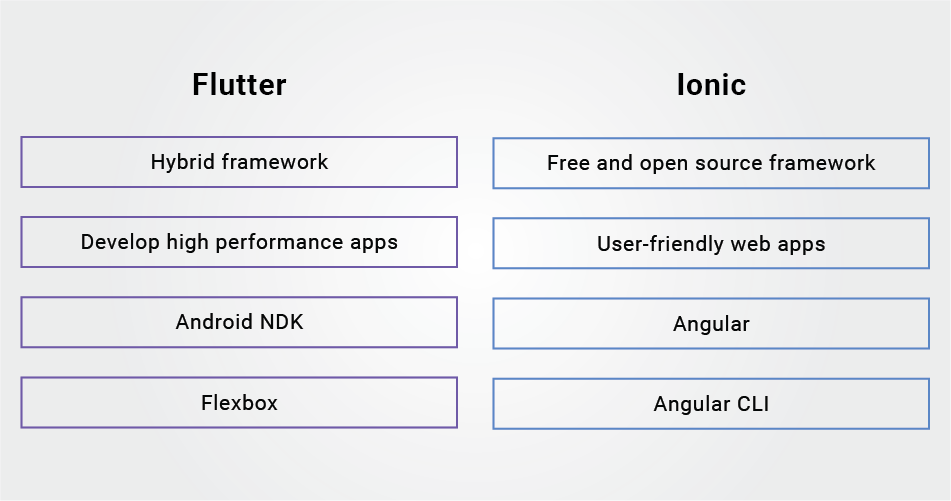
- Flutter is a fast, modular, hybrid framework that can build single-page apps (SPA) and is really fast and fluid.
- Flutter is a new cross-platform, dynamic development platform based on the Android NDK.
- Flutter is developed by Google and it has some killer features and tools out of the box. Flutter can be used as a native mobile app development platform for Android.
- Flutter is used to develop high performance apps that are lightweight and performance friendly.
- Flutter supports screen motion and touch events. It supports flexbox, a container style layout, in an easy to use and straightforward way.
- Flutter supports declarative programming with parametric updates, asynchronous operations, and event handling.
Ionic was built to help build hybrid apps for both Android and iOS. Ionic takes the best of IOS and Android code to create hybrid apps. On the other hand, Flutter, the cross-platform framework, has been built in Dart programming language and supports web pages, widgets, and animations. It was designed to cater to Android applications on desktop and mobile, iOS applications on mobile and web, and Android TV. Both frameworks have been on the market for a long time and have evolved with each technological advancement. Let us look at how big the community of these frameworks is.
